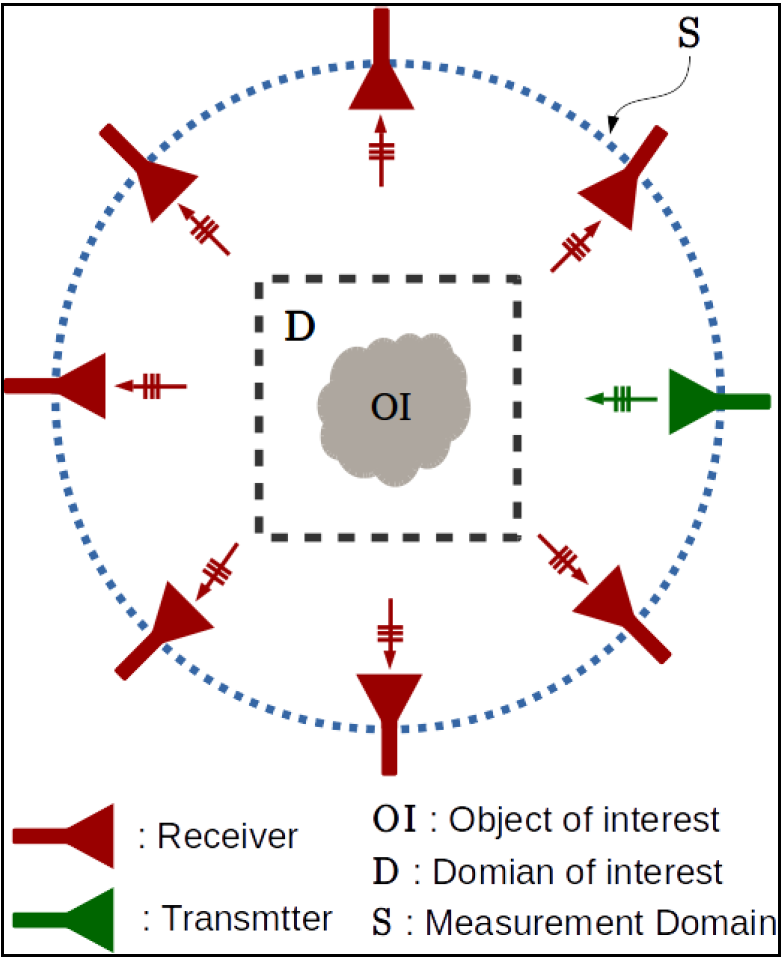Research Directions, Uday Khankhoje
6G RF research
Upcoming cellular generations such as 6G will require higher carrier frequencies and datarates. To accomplish this, several innovations are required, starting with intelligent reflecting surfaces (IRS) to restore network coverage. As carrier frequencies increase, the extent of wave diffraction decreases, and therefore coverage (around obstacles for e.g.) drops. By dynamically changing the direction of RF waves towards users, IRS is expected to restore coverage that would otherwise be lost. Another upcoming technology proposes to use novel electromagnetic states, called orbital angular momentum (OAM), to encode data in parallel in several OAM modes, thus enhancing datarate by multiplexing among modes.
Inverse Design
The field of inverse design is about using numerical techniques (optimization or machine learning) in conjuction with electromagnetic sovlers to go from the desired performance of an electromagnetic device, to its design. For e.g. one would like to specify one or more resonance frequencies of an antenna and obtain a physical design for such a structure. For an example of recent work in this area, see this paper.
Inverse Imaging
In problems such as breast cancer detection, cancerous tissue have different electrical properties (e.g. dielectric permittivity) as compared to healthy tissue at microwave frequencies. So, if we can acquire an image of the permittivity of breast tissue, we might be able to determine the presence of cancer.
 |
In technical terms, we design an experiment (numerical and or physical) where the object of interest is surrounded by transmitters and receivers, and we measure the scattered fields (see figure on the left). We then solve a mathematical problem that takes these fields (input and scattered) and gives us the permittivity as a function of space. But this problem is not very well behaved, so in addition to using electromagnetic solvers, we need clever ideas from linear algebra, image processing, compressive sensing, machine learning, etc. to solve such problems. The benefits? Low-cost, non-invasive, and portable solutions to a very prevalent disease, if the underlying mathematical problem can be solved. The same setup can be generalized to other interesting problems, such as buried object detection, through the wall imaging, etc. |